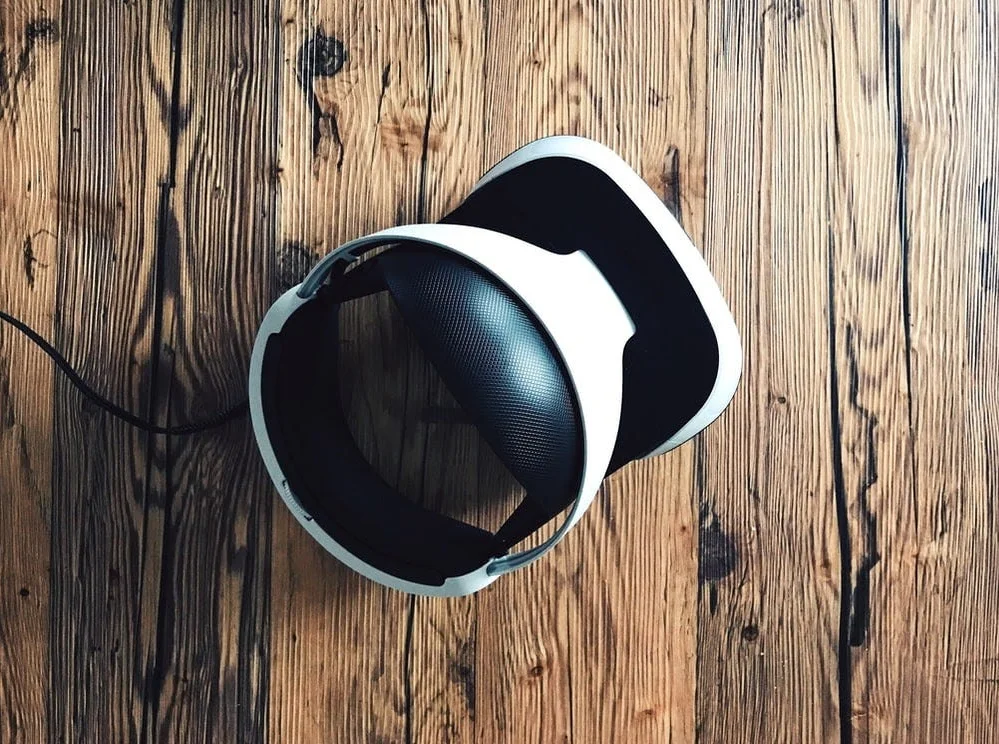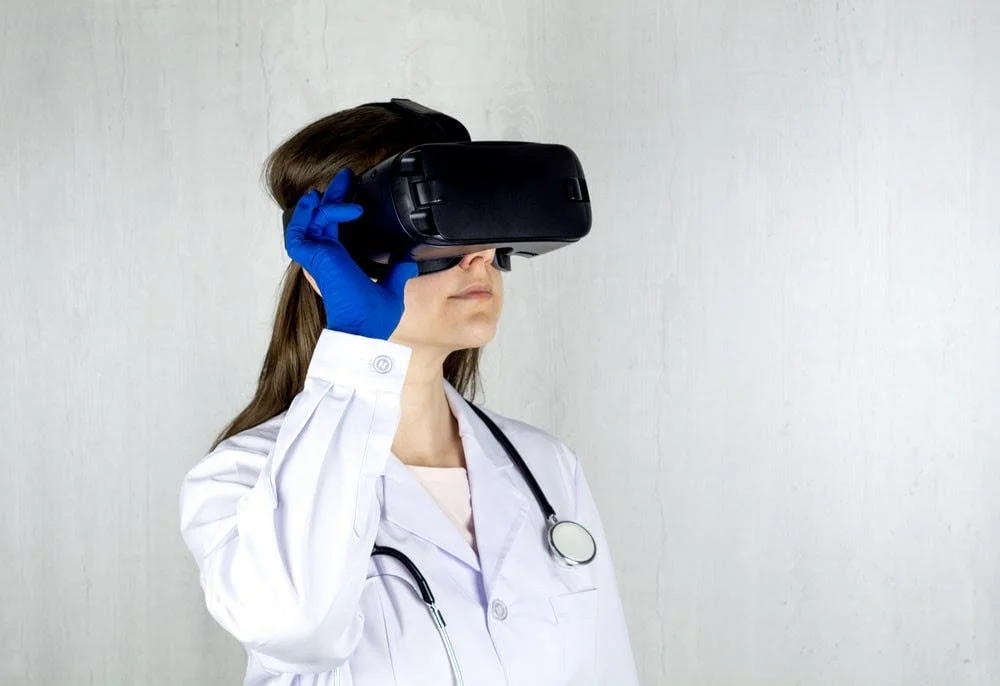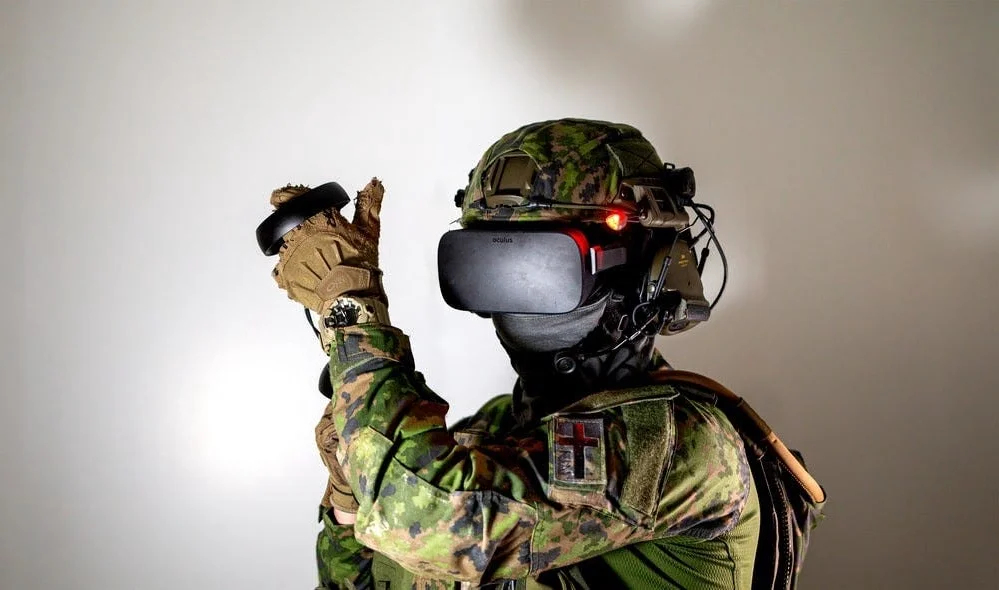An innovative technology that is taking up the world by storm is VR! VR means Virtual Reality; this is such an exciting technology! Even though people most commonly use VR for playing video games, it is also broadly used for other purposes. But, the most important questions that arise are how is VR helpful to us? Will, VR harm the world, or will it turn our world into its best version? Let’s find out!
What is VR?
Well, VR means “Virtual Reality.” Virtual Reality is when all your surroundings transform into somewhere you want to go. The only way we can use Virtual Reality is by wearing a VR headset. A VR headset looks like this:
Virtual Reality sometimes also requires “Haptic technology”. Haptic technology has another name that is “Kinesthetic Communication”. Haptic technology uses 3D technology.
Haptic technology makes Virtual Reality more interactive and enhanced by enabling vibrations, forces, motions, or somewhat pain while being in your VR simulation (using the headset). While using a Virtual Reality headset, you can also use Haptic gloves or a Haptic suit, which makes the whole experience more engaging.
Using VR, we can solve many problems. So, let’s get right into it!
“Virtual Reality is going to be an important technology. I am pretty confident about this.” -Mark Zuckerberg
How is VR propitious to us?
There are manifold valuable and advantageous impacts Virtual Reality has had on humankind. For instance, VR has helped soldiers prepare for war. Likewise, there are also many other usages of VR. For example, Virtual Reality has helped many operators practice doing surgery. Another part of great way VR has assisted us is that it has aided people to get over a traumatic incident in their past. VR does this by using “Exposure Therapy”. You must be querying, “What in the world is a thing called Exposure Therapy!?” Well, Exposure therapy is a technique that encourages people to become desensitized to an encounter that is producing them to be distressed.
VR uses Exposure Therapy by putting the person in the source of their distress using the VR headset. This type of treatment promotes people by exhibiting them what they are scared of in a secure and safe atmosphere. This helps demote the fear that they have for this circumstance.
“Virtual reality is the first step in a grand adventure into the landscape of the imagination.” –FRANK BIOCCA
Deceptions of VR technology in the educational system:

1. Deprivation of human connection and communication
Using VR in classrooms changes the traditional way of schooling, which is discussing and interacting with your peers and teachers or professors. But if we use Virtual Reality, we won’t need to communicate. Learners will solely require themselves and the software. All of this does not help whatsoever with the development of social skills. Or how to become a better talker and communicator. Nonetheless, it does contribute to the core subjects, like English, Maths, Science, Social Studies, etcetera fields.
2. Lack of flexibility
Throughout class time, you are obliged to ask questions, receive answers, and talk. Yet, while using Virtual Reality in the classroom, you are using specific VR software. The headset you are using will only do what the school makes it do, using the software. So, you don’t exactly have the versatility to inquire or interact as much using VR tech.
3. Functionality issues
Classrooms are going to stumble through technical challenges using VR in their teaching. If the staff expects young children to be able to use VR in learning to an extent, it is probably not going to work. Because many children are not as “tech-savvy” as others might be, this will cause many problems with classmates. So, using Virtual Reality in classrooms for younger students like Gr. 3 might not be the best choice out there.
4. Addiction to the “Virtual World”
Numerous children are most probably going to get addicted to the Virtual World. The reason is that there are going to be many children who use Virtual Reality in the wrong way, either to play games, do random stuff, or not do what they are supposed to do. These children and many others will get dependent on being in the “Virtual World.” All of this may be extremely harmful. If children are consuming most of the day in school wearing VR headsets, it can extract them out of their family and social life, it can also be hazardous to their eyes and cause serious effects on the brain. Virtual Reality can also make children get obsessed with wearing headsets all day long and always be able to use the technology. Parents are going to have many complaints about this and can ruin many relationships.
“Virtual Reality is a denial of reality. We need to be open to the powers of imagination, which bring something useful to reality. Virtual Reality can imprison people.” –Hayao Miyazaki
Comparing AR (Augmented Reality) and VR (Virtual Reality):

Well, before I get into comparing the two emerging technologies, I want to clarify what Augmented Reality is. So, to start, AR is when something digital (like an animal, character, food, etc.) comes into your surroundings. For example, Pokémon GO is an AR game, the new Ikea app is also an example of AR technology.
So, now that we have a little bit of insight into what AR means, and does, let’s compare VR and AR. So, here are the key differences:
-
You need a headset and a mobile device while using VR. You only need a mobile device for AR.
-
AR only puts a digital “thing” in your surroundings while keeping everything around you the same. VR on the other hand changes everything around you.
Applications of VR:
Healthcare:
Virtual Reality will help surgeons practice doing surgeries using fake patients that are simulated using VR and Haptic technology. It will also help Mental Health (mentioned above) using Exposure Therapy. Also, Post-Traumatic Stress disorder
Military, Sport, Firefighter, and Astronautical training:
VR will help people in the Military by helping them train without actually getting hurt. Also, soldiers will be able to practice in places that actually look like battlegrounds using VR and Haptic technology. The same goes for firefighters, but their VR simulation will be burning homes, buildings, etc. Right now, astronaut’s training facilities can somewhat imitate the feeling and hardships of being in space. But, using VR astronauts can get the full feeling of using Virtual Reality headsets and Haptic technology. Moreover, it can also create a full space travel simulation for the public and people who don’t want to become astronauts but still want to explore space! And people who train for sports have the same going for them, but they actually train with soccer fields, tennis fields, etc.
Tourism:
Virtual Reality is also used in Tourism. How? You ask. Well, let’s say you want to go visit Hawaii, but the plane tickets, hotel, and food combined cost more than you can afford. The solution to this is that you can use Virtual Reality to explore and go to all the places you have wanted to visit!
“Virtual Reality was once the dream of Science-Fiction. But, the internet was also once a dream, and so were computers and smartphones.” -MARK ZUCKERBU
Conclusion:

VR is a technology that changes the world you see through your eyes in. VR can help many, many industries and completely revolutionize them! And AR is also a technology that is similar to VR, but only adds a digital character and doesn’t change your surroundings. So to conclude VR is rapidly changing the world for the betterment of society!







